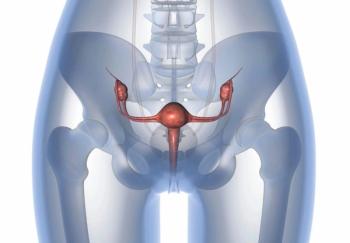
Oral Azacitidine Prolongs Survival Following Induction, Consolidation Therapy in AML
Azacitidine, was shown to significantly prolong overall survival and relapse-free survival in patients with acute myeloid leukemia in first remission regardless of the number of rounds of prior consolidation therapy.
Treatment with Azacitidine (CC-486, Onureg) significantly improved overall survival (OS) and relapse-free survival (RFS) in patients with acute myeloid leukemia (AML) in first remission regardless of the number of rounds of prior consolidation therapy, according to a poster presentation at the 2020 ASH Annual Meeting.1
“Oral azacitidine improves overall and relapse-free survival in patients with first remission after intensive chemotherapy,” said Andrew Wei, MBBS, PhD, hematologist and the head of leukemia research at The Alfred Hospital in Melbourne, Australia. He added that, although most patients can achieve remission after chemotherapy, most patients will relapse.
“Overall and relapse-free survival were improved with oral azacitidine regardless of the number of consolidation cycles received prior to study entry.”
He noted that this study, QUAZAR AML-001 (NCT01757535), was not powered to detect significant differences between consolidation subgroups. “Furthermore, a broad assessment of the impact of consolidation therapy in for the front-line management of AML was not the focus of this trial. And these conclusions do not support oral azacitidine replacing consolidation chemotherapy.”
The FDA approved azacitidine, an oral hypomethylating agent, in September 2020 for the continued treatment adult patients with AML following first complete remission (CR) after chemotherapy and who were not able to complete intensive curative therapy such as hematopoietic stem cell transplant (HSCT).2
QUAZAR AML-001 was a randomized, double-blind study and inclusion was not contingent on the number of consolidation cycles used. The aim of the study was to look at the survival outcomes in relation to patient subgroups group by the number of consolidation cycles, including 0 cycles, 1 cycle, or 2 or more cycles.
Patients were eligible for the study who were 55 years of age or older who were not eligible for stem cell transplant. Patients were enrolled within 4 months of attaining remission.
In all, 472 patients were enrolled; 79% of patients (n = 375) had 1 induction cycle with the remaining 21% (n = 97) receiving more than 1 induction cycle prior to CR or CR with incomplete blood count recovery (CRi). Patients were studied in 3 cohorts: 20% of patients who had received no consolidation cycles prior to enrollment (n = 94); 45% of patients had received 1 consolidation cycle (n = 212); and 35% of patients received 2 or more consolidation cycles prior to enrollment (n = 166). In each cohort, patients were randomized to receive either azacitidine or placebo.
Median relapse-free survival (RFS) was better with azacitidine, regardless of whether patients received 0, 1, or 2 or more consolidation cycles. In patients who received azacitidine versus placebo, the median RFS was 8.4 versus 3.9 months (HR, 0.55; 95% CI, 0.34-0.88 ) in the no consolidation cohort, 10 versus 4.7 months (HR, 0.72; 95%, 0.53-0.99) in the cohort with patients with 1 consolidation, and 13.0 versus 6.1 months (HR, 0.59; 95% CI, 0.41-0.87) in the cohort of patients with 2 or more consolidations.
Investigators observed a similar pattern in median OS. In the no consolidation cohort, median OS with azacitidine was 23.3 versus 10.9 months with placebo (HR, 0.55; 95% CI, 0.34-0.89). In the 1 consolidation cohort, median OS with azacitidine was 21.0 versus 14.3 months with placebo (HR, 0.75; 95% CI, 0.55-1.02). In the cohort of patients with 2 or more consolidations azacitidine achieved a median OS of 28.6 versus 17.6 months with placebo (HR, 0.75; 95% CI, 0.50-1.11).
Serious adverse events (AE) occurred in 15% of patients who received azacitidine. Serious adverse reactions in 2% or more of patients included pneumonia (8%) and febrile neutropenia (7%). One fatal adverse reaction (sepsis) occurred, according to a news release from Bristol Myers Squibb, which developed azacitidine.2
The most common AEs with azacitidine were nausea, vomiting, diarrhea (fatigue/asthenia, constipation, pneumonia, abdominal pain, arthralgia, decreased appetite, febrile neutropenia, dizziness, and pain in extremity. Of patients who received azacitidine, permanent discontinuation due to an adverse reaction occurred in 8% of patients.
References
1. Wei A, Roboz GJ, Dombret H, Dohner H, et al. CC-486 improves overall survival (OS) and relapse-free survival (RFS) for patients with acute myeloid leukemia (AML) in first remission after intensive chemotherapy (IC), regardless of amount of consolidation received: results from the Phase III QUAZAR AML-001 maintenance trial. Presented at: 62nd American Society of Hematology Annual Meeting and Exposition. December 5, 2020. https://bit.ly/3ge0HSW
2. US Food and Drug Administration approves Onureg (azacytidine tablets), a new oral therapy, as continued treatment for adults in first remission with acute myeloid leukemia. News release. Bristol Myers Squibb. September 1, 2020. Accessed December 5, 2020.https://bit.ly/3qxAL9B
Newsletter
Stay up to date on recent advances in the multidisciplinary approach to cancer.



















































































